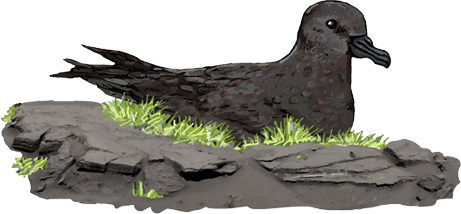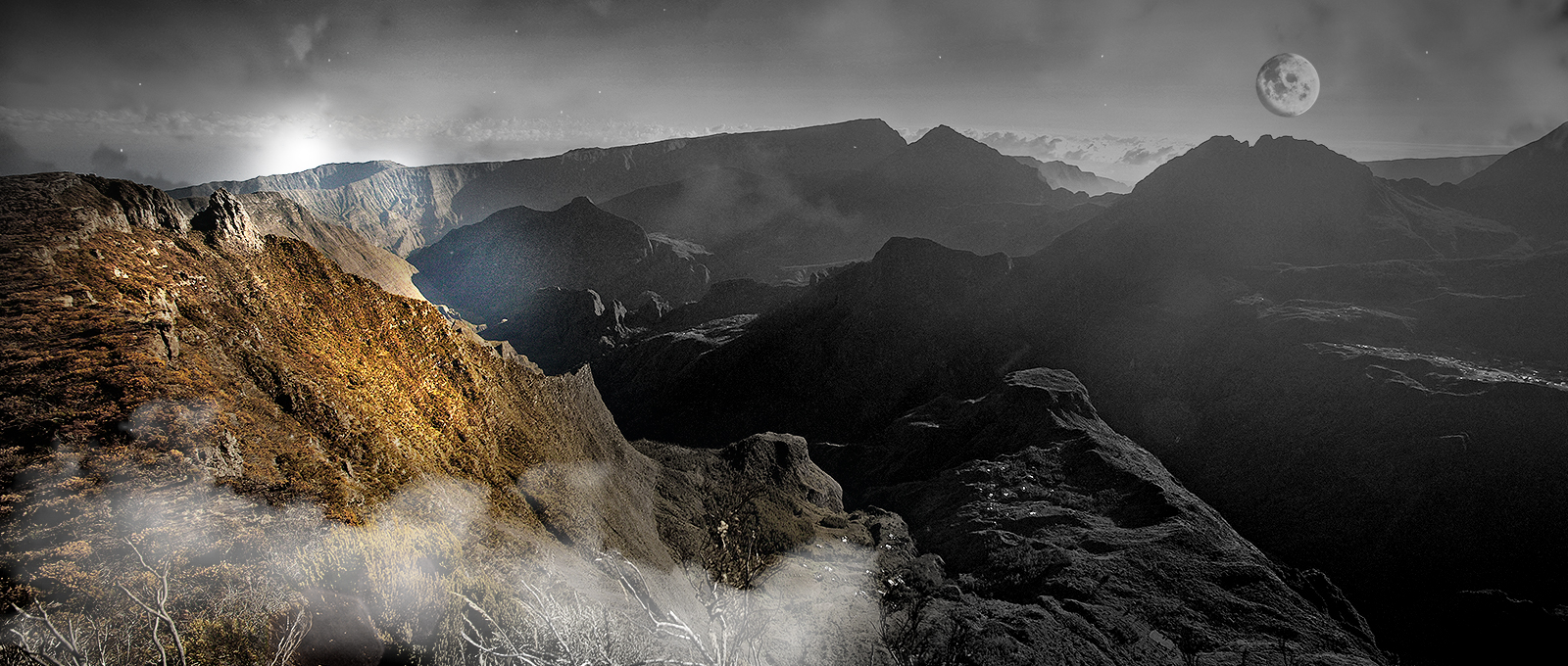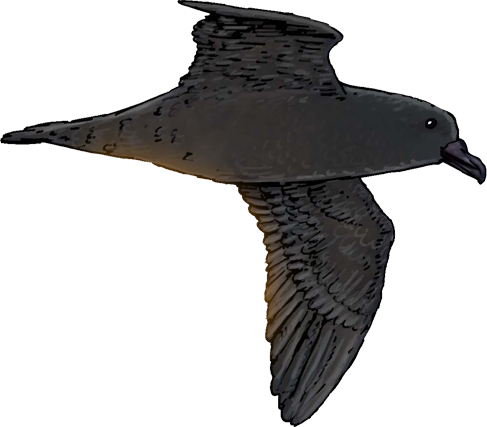Identification
Largely unknown by the general public but also by scientists, this mysterious species is called Mascarene Petrel but also “Timize” in Creole. It is behind several legends and tales from Reunion Island.
It is a dark-coloured seabird like several other species visible around Reunion Island (Black Petrel (Pterodroma macroptera), Jouanin Petrel (Bulweria fallax), Bulwer’s Petrel (Bulweria bulwerii), Pacific Shearwater (Ardenna pacifica)). This makes it difficult to identify the species with certainty when observations are made at sea.
 SOME ALARMING FIGURES
SOME ALARMING FIGURES
10 - 50 COUPLES
NEST IN REUNION IN 2015


Status
Characteristics
The call of the Mascarene Petrel is a somewhat harsh shriek to human ears. Grand-Bassin’s inhabitants heard it in the past. At nightfall, the call used to mean that it was high time to return indoors, giving it a mysterious, dark side, perhaps a little scary for some…!
The colonies are probably in cliffs and remote areas.
Endemic to Reunion, this seabird is listed by IUCN as critically endangered since 1994.
There are only 4 species of the genera Pseudobulweria on the planet. Réunion Island has the only species in the Indian Ocean.
Mascarene Petrel is virtually unknown. It was recently ranked among the 15 species with the highest risk of extinction. Estimating the population is difficult, but it is probably between 10 and 50 breeding pairs.
The first nesting site was discovered on November 15, 2016, so the ecology and biology of this species is almost unknown.
For all this reasons the conservation of this species is an emergency.








